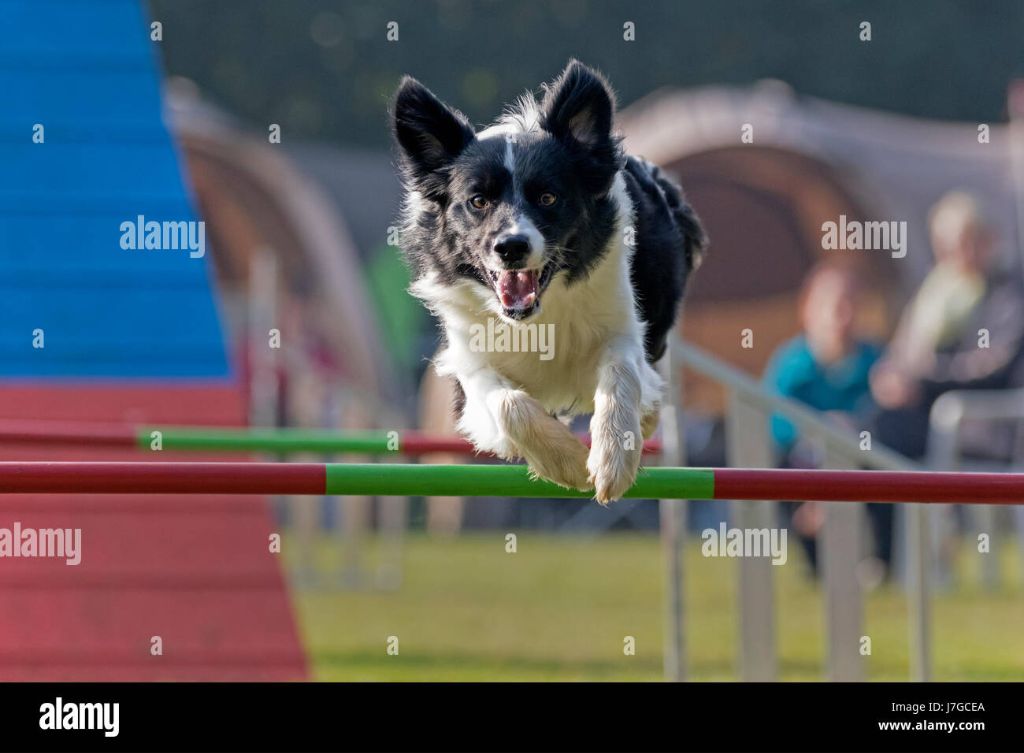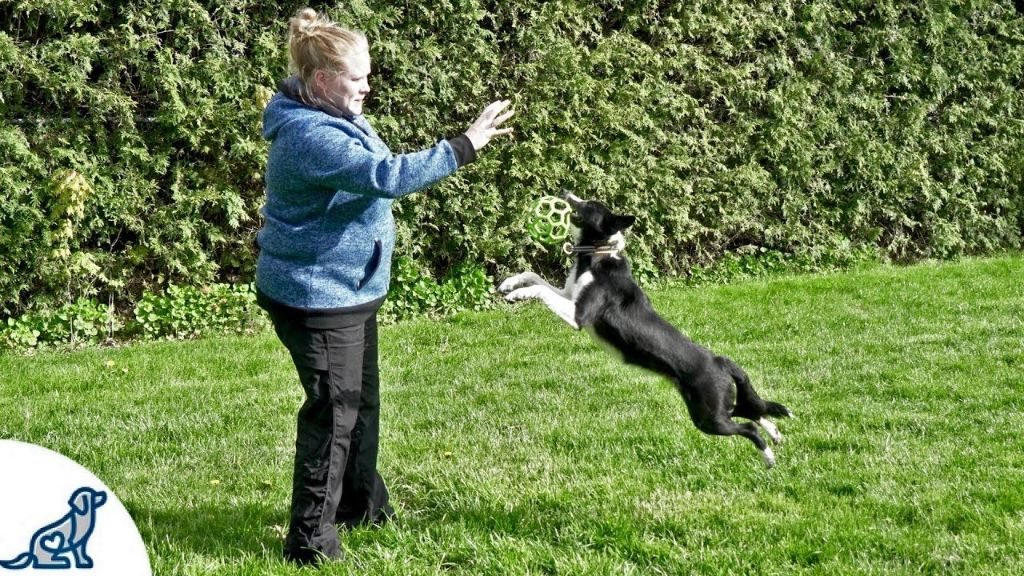Introduction
The highest dog jump refers to the record for the highest vertical leap achieved by a dog. Dogs are able to jump to impressive heights thanks to their powerful hind legs. The current highest dog jump record is held by a greyhound named Cinder who jumped an astonishing 68 inches or 5 feet 8 inches in February 2022 (https://www.greyhoundfriendsnj.org/info/display?PageID=918). This incredible feat requires immense leg strength and athleticism from the dog.
Achieving such height is no easy task. On average, most dogs can only jump around 30-50 inches high. Top jumping breeds like greyhounds, border collies, and Australian shepherds are best equipped for leaping to great heights. Proper training and conditioning is key to unlocking a dog’s vertical jumping potential. In this article, we’ll explore the impressive world of high jumping dogs including muscle use, training tips, world records, competitions, and more.
Top Breeds for Jumping
When it comes to dogs with incredible jumping abilities, there are a few breeds that stand out above the rest. Three of the top jumping dog breeds are Border collies, Australian shepherds, and Belgian Malinois.

Border collies are renowned for having extraordinary athleticism and agility. They have very strong hindquarters that generate immense power and lift for leaping high into the air. Border collies regularly take the top prizes at canine jumping competitions, and hold many world records for highest jumps. Their intelligence and trainability also make them excellent at learning jumping skills. [1]
Australian shepherds possess similar traits to border collies in terms of athleticism, strength, and trainability. They have very muscular rear legs that propel them upwards, and their energy and stamina allow them to practice jumping for long periods. Australian shepherds excel at a wide range of canine sports requiring agility and vertical hops.
Belgian Malinois have built up a reputation as powerhouse jumpers. They are used extensively as police and military working dogs where their leaping ability is a major asset. Malinois can easily clear tall fences and walls. Their strong hind legs and energetic temperament make them well-suited for scaling high obstacles.
While individual ability plays a role, these three breeds have consistently produced many of the highest jumping dogs thanks to their genetics and temperaments oriented towards athleticism and jumping.
Muscles Used for Jumping
When dogs jump, especially up high walls or obstacles, they rely heavily on the muscles in their hind legs, back, and core for power and lift. According to K9 Fit Solutions, the main muscles used are:

- Hind legs – Dogs use their powerful hind leg muscles including the quadriceps, hamstrings, glutes, and calves to propel themselves upwards.
- Back – The muscles along a dog’s back, like the latissimus dorsi, help extend and arch the back to reach higher.
- Core – A strong core Is critical for balance, stability, and transferring force from the hind legs to the front legs. Key core muscles are the abdominals, lower back, and obliques.
To jump higher, dogs rely on explosive strength from muscles in their hindquarters. Exercises like squats, rear leg lifts, and using an incline can help build muscle. Core exercises such as planks and balance work also help dogs jump up safely. A proper warm-up is key to prevent muscle strains. Understanding the main muscles dogs engage when jumping can help tailor training programs.
Training Tips

One of the best ways to train a dog to jump high is through target training. This involves holding up a target, like your hand or even a stick, and having the dog jump up to touch it. Start low and gradually raise the target to condition them to jump higher. Always positively reward with treats when they touch the target. Target training allows you to mark exactly when they have performed the correct behavior. According to wikiHow, “The key is to raise the target very gradually over multiple training sessions to build confidence and condition the dog’s muscles for the height.”
It’s important not to push your dog too high or fast in the beginning. Let them set the pace and keep training sessions short to avoid overworking their muscles. Provide ample encouragement and praise throughout the process. With patience and incremental training, you can teach your dog to safely jump very high. But always monitor for signs of fatigue, hesitation or fear. Jumping should be an enjoyable activity for you both. As the AKC advises, “Make sure your dog is physically capable of jumping to the height you’re asking of them, and stop the behavior if they show any signs of injury or pain.”
World Records
The current world record for the highest dog jump is held by Feather, a Belgian Malinois who jumped 191.7 cm (75.5 in) in Frederick, Maryland on September 14, 2017 (source). Feather broke the previous record held by Cinderella May, a Greyhound who jumped 178 cm (70.07 in) in 2014.
Some other notable high jumping dogs include:
– Clover, a Whippet who jumped 172 cm (67.72 in) in 2007.
– Coby, a Belgian Malinois who jumped 178 cm (70.08 in) in 2013.
– Comet, a Whippet who jumped 174 cm (68.5 in) in 2010.
The highest jumps tend to be achieved by athletic breeds like Belgian Malinois, Greyhounds, Whippets, and Border Collies. These dogs have muscular hind legs that allow them to propel themselves upwards with great force and height.
Competitions
There are several major competitions where dogs can showcase their incredible vertical jumping abilities. Some of the most popular ones include:

DockDogs
DockDogs is one of the largest dock jumping organizations, with over 17,000 active members. They host events around the world where dogs compete to see who can jump the farthest off a dock into a pool of water. DockDogs has four different jumping divisions – Big Air, Extreme Vertical, Speed Retrieve, and Iron Dog. The Big Air competition measures how far a dog can jump horizontally off the dock. Extreme Vertical measures the highest vertical jump. DockDogs events are a hugely popular spectator sport.
Purina Pro Plan Incredible Dog Challenge
The Purina Pro Plan Incredible Dog Challenge is a televised competition featuring Olympic-style events for dogs. It includes events like dock diving, freestyle flying disc, Jack Russell hurdle racing, and the vertical jump. The vertical jump competition has dogs running down a 40 foot runway and then leaping up to grab an object suspended at adjustable heights. The current record was set in 2018 by a Belgian Malinois named Verb who jumped 8 feet!
X Games
The X Games have featured a Big Air competition for dogs since 2013. Just like with DockDogs, dogs jump off a dock ramp into a pool and are scored on horizontal distance. The current X Games Dog Big Air world record was set in 2013 by Jumpy the dog, who jumped 28 feet! The X Games provide great mainstream publicity for this exciting canine sport.
Health Considerations
Jumping up to high places like walls can be risky for a dog’s health if not done carefully. While dogs are athletic animals, their bodies are still vulnerable to injury, especially the joints, ligaments and growth plates when puppies. According to GWFNutrition, repetitive high impact exercise like jumping on hard surfaces can damage cartilage over time and lead to joint issues like arthritis later in life.
It’s important not to overwork a dog when training them to jump high, and provide adequate rest time between jumping sessions. Puppies especially shouldn’t be doing extensive high jumping until at least 12 months when their growth plates have closed, as noted by the AKC. Providing a soft landing surface like grass or padding can help reduce injury risk as well. With careful training and awareness of their physical limits, dogs can safely perform impressive vertical leaps without injury.
Benefits of Jumping
Jumping up walls and other vertical structures provides some great benefits for active, energetic dogs. It serves as an excellent form of exercise, providing a full-body workout that engages various muscle groups. The act of propelling upwards activates the hind legs, back, and shoulder muscles as the dog exerts force to lift their bodyweight. This helps strengthen muscles, burn calories, and keep your dog fit and healthy.
In addition to physical exercise, jumping activities provide important mental stimulation as well. Having to judge distances, gauge heights, and maneuver their body mid-air challenges your dog cognitively. They have to think strategically about how to tackle each jump. This mental exercise keeps them engaged and focused. Over time, it can even boost confidence as they master new heights and techniques.
Finally, training and practicing jumping together provides a great opportunity for you to bond with your dog. Sharing in the thrill of achievement when they clear a new height or perfect a trick can strengthen your relationship. It allows you to provide encouragement and praise, reinforcing the human-animal bond. Jumping is something active and energetic dogs often enjoy, so channeling that into a collaborative activity you do together creates shared experiences and quality time.
Equipment
Having the right equipment is essential for training a dog to jump high. Some key pieces of equipment to have include:
- Toys – Using toys as rewards is a great way to motivate dogs during training. Popular toys include balls, frisbees, tug ropes, and squeaky toys. Having a variety of reward toys keeps dogs engaged.
- Mini agility equipment – Starting with lower jump heights and portable equipment allows you to train in small spaces. Mini hurdles, broad jumps, and high jumps that can adjust from a few inches high to over 4 feet are ideal for beginning training. Sources like Amazon and J&J Dog offer adjustable and portable agility jumps.
- Treats – Food rewards like small training treats or pieces of hot dog can also motivate dogs during training. Using treats in conjunction with toys provides variety.
Having the proper equipment allows you to start training at an easy level and gradually increase the height as your dog progresses. Adjustable mini agility jumps are especially useful for backyard training. With the right equipment, you’ll be able to successfully teach your dog to jump higher.
Conclusion
Throughout this article, we’ve explored some of the most impressive feats of high jumping by dogs. From world records held by athletic breeds like the Belgian Malinois to viral videos of playful pups leaping over 6 foot fences, it’s clear that dogs are capable of astonishing vertical jumps.
With proper training techniques focused on building hind leg strength, providing mental stimulation through agility exercises, and maintaining their overall health, many dogs can reach impressive jumping heights. The world record holders mentioned earlier in the article demonstrate what dedicated training and top physical conditioning can achieve.
While jumping at great heights is not necessary for all dogs, incorporating some basic jump training into their routine can be beneficial. Jumping utilizes key muscle groups, burns energy, and challenges them both physically and mentally. For dogs bred to herd, protect or compete in canine sports, honing their natural jumping ability can be an excellent outlet.
With patience and proper precautions taken to avoid injury, dog owners can tap into their pet’s innate jumping talent. By recaping some of the amazing records and videos we’ve covered here, it’s clear that man’s best friend may just be nature’s top jumpers too.
